As someone who’s spent years working with digital platforms, I’ve noticed that developers can spot a weak system instantly. You can have the most stunning interface or innovative features, but if the platform stutters or lags, it’s game over.
ERP dashboards, HR systems, or CRM tools are abandoned before users even complete one task. Slow load times or syncing issues aren’t just technical hiccups; they’re warning signs. They tell developers your system isn’t built for scale, reliability, or efficiency.
That’s why many companies today turn to ERP Software, a lightweight yet powerful solution optimized for speed, real-time syncing, and modular flexibility if you want your platform to perform as well as it looks, investing in the right ERP system is where it starts.
Key Takeaways
|
When Latency Signals Fragility
Latency isn’t just a metric—it’s a message. Developers interpret delays not as temporary hiccups, but as symptomatic of deeper architectural failings—especially in ERP environments where real-time reporting or inventory syncs rely on low-latency systems.
A job portal that takes five seconds to load isn’t merely slow; it suggests poor asset optimization, misconfigured caching, or overloaded backend services. Just ask brands like Delta, where overloaded application portals have led to both system failures and PR headaches.
Even worse are mobile-specific latency problems. While many platforms optimize desktop performance, they ignore the mobile edge—where form responsiveness, JavaScript execution, and touch-based rendering often fall short.
Developers accessing your listing from mobile (and many do) encounter lag, jitter, or outright failure. As mobile-first optimization becomes a baseline expectation, the absence of responsiveness doesn’t just frustrate—it disqualifies.
At that point, your infrastructure becomes a filter that screens them out. And when mobile responsiveness is missing, it undercuts the fundamentals of creating a remote-first candidate journey that modern developers expect.
CDN or Bust: Fixing Global Delivery Gaps

These days, running without a content delivery network is like trying to sprint through molasses. Especially for companies hiring across geographies, CDN usage can make or break whether your listings load in time to matter.
Without one, static assets like CSS, JS, and images get hauled from a single origin server, throttling under distance and demand—particularly painful for HR teams accessing timesheets or approval flows spread across multiple locations.
Grasping a CDN’s inner workings is an operational imperative for teams serious about digital performance. Without one, every image, script, and style sheet has to travel the full length of the network from your origin server, often creating delays.
CDNs solve this by storing those assets on edge servers positioned closer to the end user. That proximity cuts down on round-trip time, trims milliseconds from page loads, and reduces the likelihood of timeouts or incomplete renders.
For developers, this is more than a performance perk—it’s a signal. A well-configured CDN shows that your team anticipates demand, respects user experience, and has the operational maturity to support distributed access at scale.
Some platforms are now embracing hybrid models that let you mix and match CDNs for greater control over performance zones. That means a developer in Berlin doesn’t need to ping your server in Virginia to load a stylesheet.
Here is a table summary that discusses the comparison between CND and Bust in fixing global delivery gaps.
| Key Aspects | Description |
| Impact of not using a CDN | Without a CDN, static assets (CSS, JS, images) load from a single origin server, causing delays, especially for geographically distributed teams. |
| Operational importance | Understanding CDN functionality is crucial for teams serious about digital performance and user experience. |
| How CDNs work | CDNs store assets on edge servers closer to users, reducing round-trip time and minimizing load delays or incomplete renders. |
| Developer perspective | A well-configured CDN signals technical maturity, anticipation of demand, and respect for user experience. |
| Hybrid CDN models | Some platforms allow combining multiple CDNs to optimize performance zones, ensuring faster access for users worldwide. |
When Forms Fail, So Does Trust
There’s nothing quite like filling out a job application form—only to hit submit and watch nothing happen. To a developer, this isn’t just annoying; it’s a microcosm of what working at your company might be like. Fragile interfaces. Poor validation. Flaky integrations.
Sometimes the problem lies in frontend frameworks that don’t degrade gracefully. In ERP or HR platforms, this often shows up as form fields that reset unexpectedly or validation that fails silently.
Sometimes it’s cross-browser incompatibility or improperly handled async operations that cause silent errors—especially in systems like booking engines or payroll submission modules.
Whatever the cause, the takeaway is the same: the funnel collapses not from lack of engagement, but from lack of reliable execution. It’s a breakdown that mirrors broader patterns in avoiding assessment mistakes in recruitment.
Tools like HashMicro ERP incorporate intelligent form validation, async error handling, and mobile-first UI frameworks—minimizing breakdowns in candidate workflows or approval forms.
Devs Don’t Care About Pretty—They Care About Performance
You can focus on sleek designs and flashy animations, but they mean nothing if your site lags. Developers aren’t impressed by visuals—they’re looking for performance signals that reflect solid engineering and respect for user experience.
Mobile load times directly affect both experience and conversions. Ignoring them shows misplaced priorities and weak technical culture, shaping a candidate’s perception long before the interview begins.
Design flourishes that rely on bloated libraries or heavy animations can actually hurt more than help. These aesthetics often mask common pitfalls in tech hiring, like infrastructure decisions that quietly sabotage developer trust.
In some cases, they’re the cause of page instability or memory leaks. What you need instead are lean, testable components that prove your engineering maturity—not your marketing spend.
Conclusion
Every delay or glitch tells developers everything; they see it as a reflection of your priorities and technical culture. Slow, unreliable systems don’t just frustrate users; they drive top talent away before you ever meet them.
High-performing teams know infrastructure is the first impression. HashMicro’s ERP System monitors real performance, fixes latency before it hurts users, and designs systems that work flawlessly, even at the edge.
If you want developers to apply and stay, your infrastructure must perform like your team does. That’s why innovative companies choose HashMicro ERP, built for speed, reliability, and seamless operations. Try the free demo now!

Frequently Asked Questions
-
What are the most common infrastructure mistakes that affect ERP and HR platforms?
The most common issues include poor server scalability, lack of CDN integration for global access, slow database queries, and weak API architecture. These can lead to slow load times, syncing errors, and overall poor user experience.
-
How do infrastructure problems impact system performance and user adoption?
When your ERP or HR system lags or crashes, users quickly lose trust. Developers and employees may avoid using the platform altogether, reducing efficiency and data accuracy across departments.
-
How can businesses prevent infrastructure-related ERP and HR failures?
Regular performance testing, cloud optimization, and choosing a reliable ERP provider like HashMicro can prevent these issues. A well-built infrastructure ensures fast response times, smooth integrations, and scalable performance as your company grows.

















































